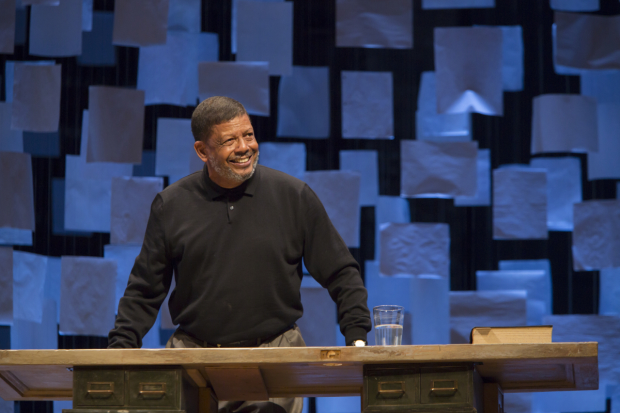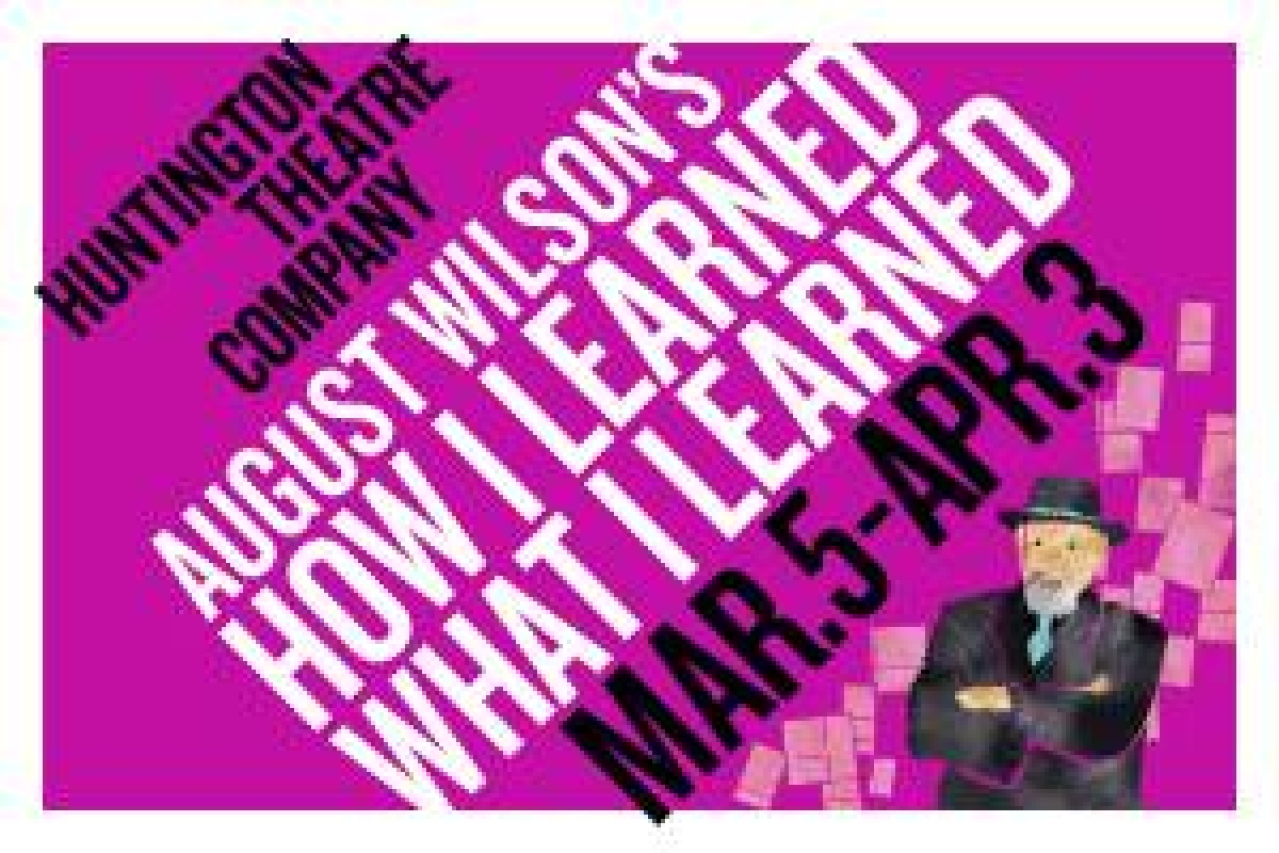How I Learned What I Learned

(© T. Charles Erickson)
The late playwright August Wilson, who died in 2005, forged tight bonds with Boston-area audiences over the nearly 20 years during which the Huntington Theatre presented all 10 plays of his American Century Cycle, seven of them before they went to Broadway. We came to know this troubadour of black life in America, who covered more than 200 years of indignities, suffering, and fights for equality. We loved him for the humanity of his characters while marveling at an imagination that fused myths of black people with dreams of opportunity in America.
Wilson returns, in a sense, to the Huntington stage this time embodied by veteran actor Eugene Lee, his close friend, who performs Wilson's autobiographical, 100-minute-long monologue, How I Learned What I Learned. Todd Kreidler co-conceived the work with Wilson and continues to direct it with Wilson's widow, Constanza Romero, who is also listed as creative consultant and costume designer. Wilson himself performed the play only once before he died.
How I Learned What I Learned takes place in post-World War II America in the Hill District of Pittsburgh where the population was mainly black and economically depressed. The actor relates the recollections and observations of a young man discovering his life as a poet.
At the start of the play, Lee sets a verbal scene by reciting the statistics of Wilson's world bounded by four main streets, which held nine drugstores, 82 churches, and 147 bars. The price-gouging supermarket burned down after the riots that erupted after the assassination of Martin Luther King Jr., "but I did not set the fire," he claims, even though Wilson was photographed standing triumphant in the ruins of the store.
The play continues in a series of reveals about Wilson's emotional response to his gradual maturity, incorporating a young man's resentment at racial profiling, his sense of irony as he considers it, and his overarching humor, despite the pain. He describes a deep love for his mother and his dependency on her, although he left home for his own apartment at age 20. He directs his anger at the racist bosses for whom he worked in menial jobs that he quit on principle, and he voices appreciation for friends like the homeless man Cy Morraco, who gave Wilson his overcoat, and the poet, Chawley Williams, who kept a drug dealer from Wilson's side. The play ends before Wilson turns to the theater and begins to write plays.
Lee is a magnetic actor who holds attention with a change of posture, a shrug of his shoulders, or a wide-eyed stare of mock disbelief. His wonderfully flexible vocal instrument allows him to become the various people whom Wilson encountered while his body moves in time to the rhythms of Wilson's language, enhanced by the jazz music that he loved and a brief but expressive passage of Afro-American dance.
The performance is set on a platform that holds a stool, a table, and a desk. Designed by David Gallo, these items sit in front of a backdrop constructed of dozens of single sheets of paper pinned to it. The clicking of typewriter keys announces each of the different anecdotes, ending in a glowing mosaic of the titles of Wilson's plays spread across the back wall.
The theme of the lessons Wilson learned forms the spine of the work. "I am my mother's son," he says, along with the oft-repeated mantra, "Something's not always better than nothing," which affirms his demand for respect and refusal to shed his principles, even at the cost of his early jobs. Wilson's remarkable 10-play cycle stands as a declaration of his life and beliefs, spoken by the characters he created and the life he lived before he turned into his life's work.











